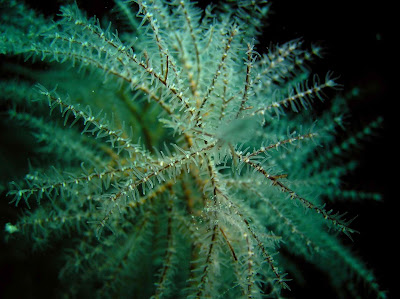
Olango island is opposite Mactan island on which is housed the international airport for Cebu in the central Philippines. It's only an hour and a half away from KK by plane and can be expected to share a significant ocean fauna with us here. I had a chance to explore last weekend, but I will try to connect my comments to TARP:
First of note is that I recorded 79 species of fish in 1 hour and 35 minutes underwater (two dives) in a single location called Talima. In comparison, it took me 3 hours and 6 minutes to do the same in TARP. My initial feeling is that the species density is much higher at Talima, although I could just have attended an amazingly diverse site (not the impression given by our dive leader who said he had chosen Talima because it was sheltered from big waves but not that good). The size of the larger fishes shoals in Talima was obviously greater than TARP: continued fishing of larger fish in TARP could conceivably have had an impact on species density in proportion to shoal densities.
Secondly, 34 (43%) of the fishes I recorded at Olango were never recorded by me in TARP despite diving or snorkelling here with a working camera for over 75 hours. Even if all other fish species were identical, there is a minimum of 9% unique to Olango compared to TARP (but more likely the figure is around 40%: my 2 dives in Talima are akin to a statistical sample). Possibly, it is because Talima represents an ecosystem not exactly matched in TARP - eel grass with scattered coral bommies and a very deep drop off. But a number of species I have not seen in TARP but are found at Olango were seen in a 1992 survey in TARP by Gerry Allen. It makes me wonder whether Olango represents a more healthy reef in general now - more like the TARP of the early nineties? In that case, given the pelagic nature of many reef fish larvae, it makes me wonder if the coast and near shore reefs of western Sabah will ever be rehabilitated sufficiently
en masse to return TARP to the best it could be - it will take more than preserving TARP by itself.
Thirdly, four interesting groups appeared at Olango which have not turned up in my experience in TARP: Hawkfishes (an example photographed under a wrecked boat spar from the family CIRRHITIDAE
Cirrhitichthys falco is shown here), Unicornfishes (Genus
Naso), Drummers / Sea chubs (Family KYPHOSIDAE), and Anthiases (Genus
Anthias). Why? Unicornfishes appear to prefer to be near deep drop-offs - and we have none in TARP whereas off Olango, the slope drops off steeply in a coral wall at around 15-20 metres. But as for the other groups, I have no idea although the beauty of Hawfishes and Anthiases does make me feel that TARP is poorer for not having any.
 Nearly the end of 2008 and loads to reflect on this year in TARP Watch (which I won't here). But the place still continues to surprise me: on Christmas eve, I was snorkelling for only an hour off Sapi island and photographed examples of another 5 species new to me here! This takes my total to 389. (The combined total of all known recorded identified fishes since 1992 now stands at 529; contrast this with the most speciose part of the Caribbean: Bonaire with 487 species logged in the REEF database). December 24th's additions were: Needlefish Strongylura incisa, Damselfishes Chrysiptera unimaculata (Juvenile) and Pomacentrus dickii, Sea Chub/ Drummer Kyphosus vaigiensis (also a new family here for me - KYPHOSIDAE), and lastly the Boxfish Ostracion meleagris (this one male).
Nearly the end of 2008 and loads to reflect on this year in TARP Watch (which I won't here). But the place still continues to surprise me: on Christmas eve, I was snorkelling for only an hour off Sapi island and photographed examples of another 5 species new to me here! This takes my total to 389. (The combined total of all known recorded identified fishes since 1992 now stands at 529; contrast this with the most speciose part of the Caribbean: Bonaire with 487 species logged in the REEF database). December 24th's additions were: Needlefish Strongylura incisa, Damselfishes Chrysiptera unimaculata (Juvenile) and Pomacentrus dickii, Sea Chub/ Drummer Kyphosus vaigiensis (also a new family here for me - KYPHOSIDAE), and lastly the Boxfish Ostracion meleagris (this one male).





































